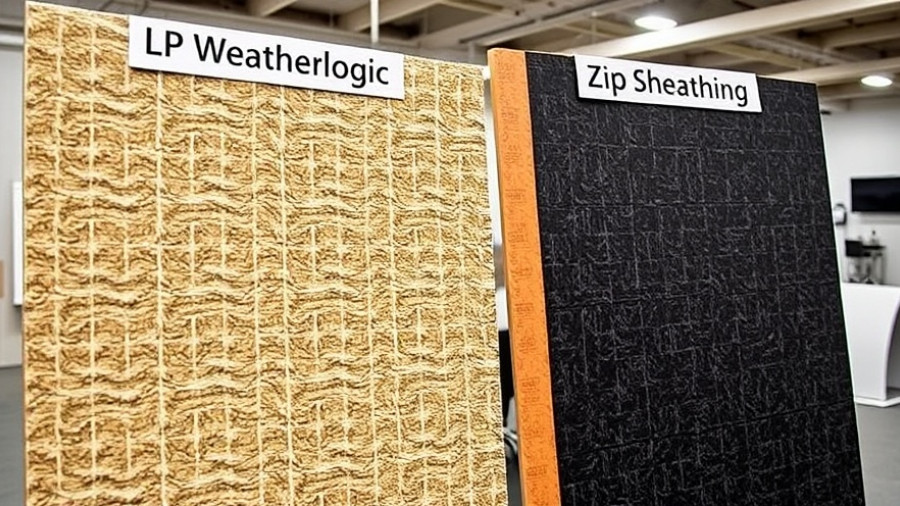
Understanding Modern Sheathing Options for Builders
In the ever-evolving landscape of construction, the importance of choosing the right sheathing system cannot be overstated. Traditional house wraps are becoming less favored as modern alternatives, like LP WeatherLogic and Zip Sheathing, gain traction among builders. Both options promise enhanced durability against the elements, but which is the right fit for your project?
Key Features and Benefits of Zip Sheathing
The Zip System Sheathing is a structural OSB panel that integrates a water-resistant membrane, allowing it to act efficiently as both structural support and a barrier against moisture. Typically, its installation requires Zip Tape or Zip Liquid Flash to seal the seams, which ensures a continuous air barrier when executed correctly. Builders often choose Zip for its proven track record and energy efficiency, as it significantly contributes to airtight construction.
However, one must consider the meticulous nature of its installation process. Ensuring that seams are adequately sealed is essential for preventing potential water intrusion. Thus, while Zip Sheathing enjoys popularity, the emphasis on detail during installation cannot be overlooked.
Why Choose LP WeatherLogic?
On the other hand, LP WeatherLogic offers a factory-applied water-resistant overlay that simplifies installation. Its panels require Taped seams with WeatherLogic Seam & Flashing Tape, providing an avenue for moisture to escape, thanks to its high vapor perm rating. This permeability is crucial in preventing mold growth and enhancing the overall health of building interiors.
LP WeatherLogic’s strength lies in its durable, impact-resistant design and lower need for expertise in taping, which can be beneficial for less experienced installation teams. However, being newer to the market, it has fewer long-term performance studies compared to the widely accepted Zip system.
Comparative Analysis: Which Sheathing is Best for Your Build?
Choosing between Zip and LP WeatherLogic boils down to climate considerations, installation team skills, and long-term performance expectations. Builders working in zone 4A, for instance, may prefer LP WeatherLogic due to its higher vapor transmission rate, which allows walls to breathe more effectively. This can be a game-changer in regions where moisture management is paramount.
Conversely, for those who favor a well-established option with extensive field testing, Zip remains a justifiable choice. Regardless of the path chosen, both materials markedly enhance structural integrity compared to traditional wraps.
Conclusion: Making an Informed Choice
In conclusion, the debate over LP WeatherLogic and Zip Sheathing highlights a critical aspect of modern construction: the necessity of selecting materials tailored to specific building needs and environmental exposures. While both systems boast robust weather protection capabilities, builders must weigh factors such as installation complexity and moisture management capabilities.
As the construction industry moves toward more sustainable practices, understanding the benefits of each sheathing option is vital. Whether considering LP WeatherLogic’s moisture management or Zip’s proven reliability, informed decisions will lead to long-lasting and efficient builds.
 Add Row
Add Row  Add
Add 




Write A Comment